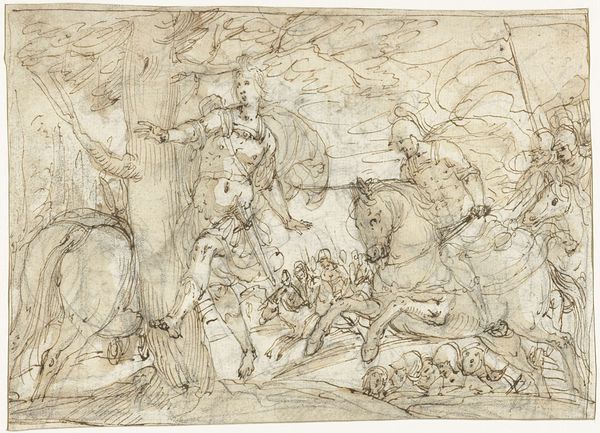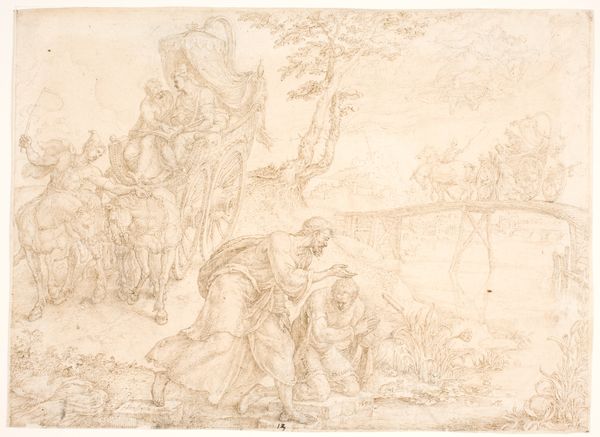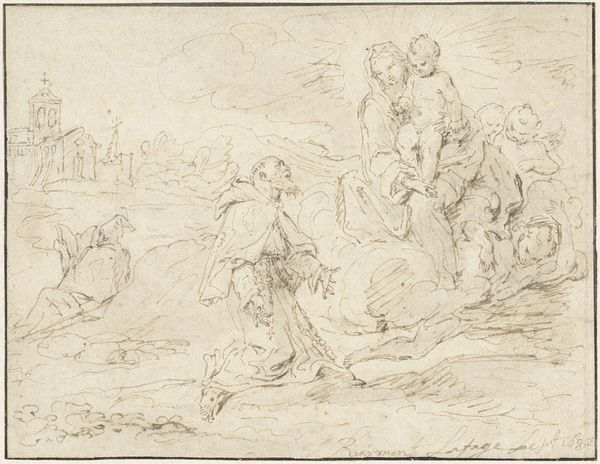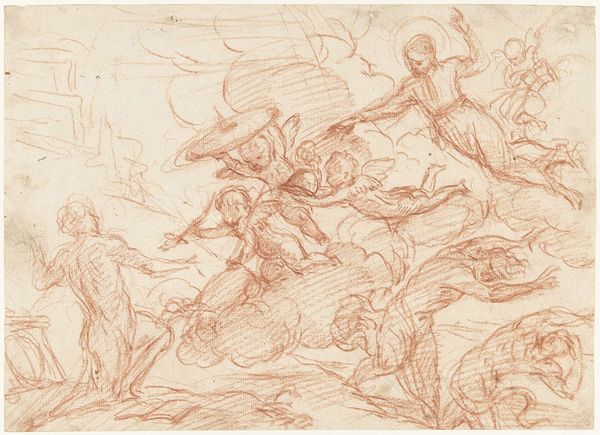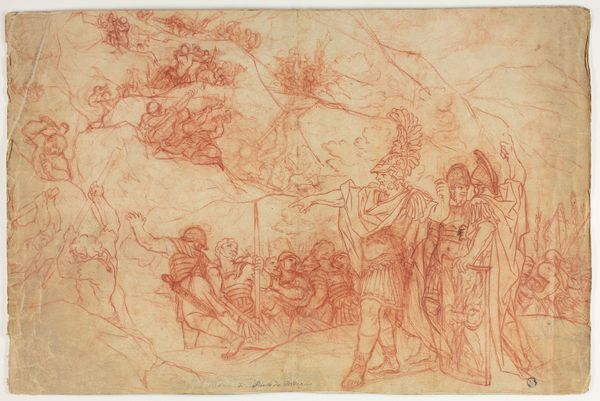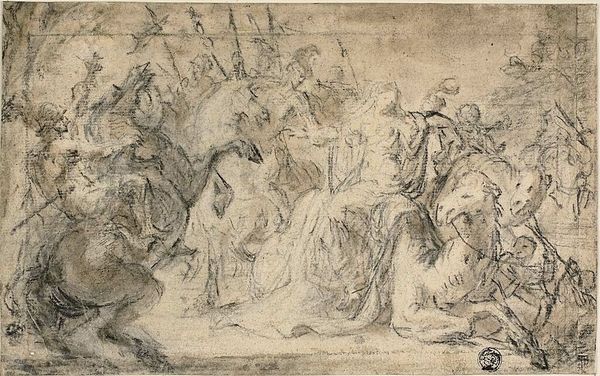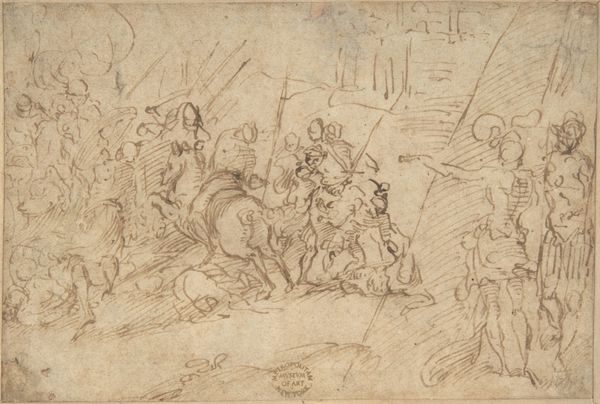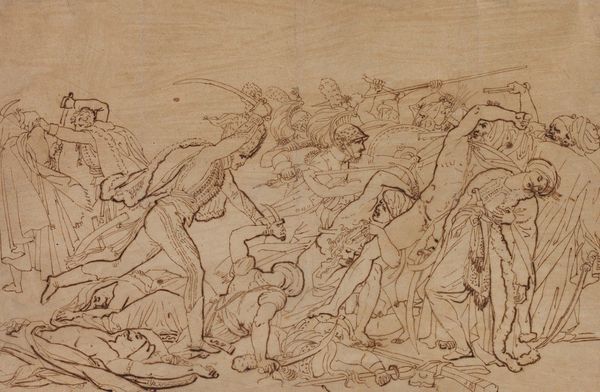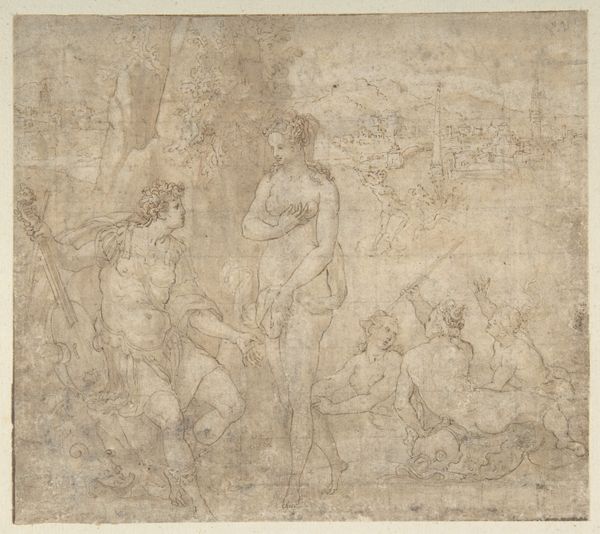
drawing, paper, chalk, charcoal
#
drawing
#
baroque
#
landscape
#
charcoal drawing
#
figuration
#
paper
#
chalk
#
charcoal
#
history-painting
#
academic-art
Dimensions: 181 × 246 mm
Copyright: Public Domain
Curator: Guillaume Courtois created this intriguing drawing, "Mars and Venus (recto and verso)," sometime between 1648 and 1679. It's currently held here at the Art Institute of Chicago and rendered in chalk and charcoal on paper. Editor: My initial impression is of a dreamscape, sketched quickly but brimming with narrative potential. It's not immediately clear, though, which is precisely what intrigues me. There’s an energy to the composition. Curator: Absolutely. The figures of Mars and Venus, prominent within a pastoral scene, are of course loaded with symbolic significance. Venus, goddess of love, and Mars, god of war… their interplay has been explored for centuries, representing the dichotomy of love and conflict. What's fascinating here is how Courtois captures the fluidity of that dynamic. Editor: I agree, it almost feels like Courtois is dismantling the very notions of love and war. Mars, typically a figure of strength and aggression, seems rather subdued, while Venus reclines, almost passive. I wonder what this positioning says about 17th-century perceptions of power, particularly gendered power? Curator: Indeed, and we see a youthful figure in the foreground striking a pose with an arrow, very like Cupid. So love and warfare and eros and combat all intermix, as if he’s hinting at how tightly bound they are. Then, the landscape behind is almost separate—a scene from pastoral literature, hinting at the possibilities of escaping from more chaotic themes. Editor: Looking closer at the landscape, I can’t help but think about class disparities in the artist's context. Courtois was working in Rome during a period of great social stratification, and idyllic scenes like these often romanticized rural life in a way that masked the realities of poverty and labor. Is he offering us an escape or a critique? Curator: That tension between the idealized and the real is key, and it comes alive in this sketch. The very materials – chalk and charcoal – possess this quality of transience and changeability, as if things aren’t what they seem. Editor: I'd agree completely. Overall, seeing art that wrestles with historical and mythical ideas gives you so much more to consider, even as we debate interpretations centuries after it was made. Curator: It speaks to the enduring power of myth and symbolism. It lets the viewer consider universal themes of human relationships from vastly different vantage points through art history.
Comments
No comments
Be the first to comment and join the conversation on the ultimate creative platform.

